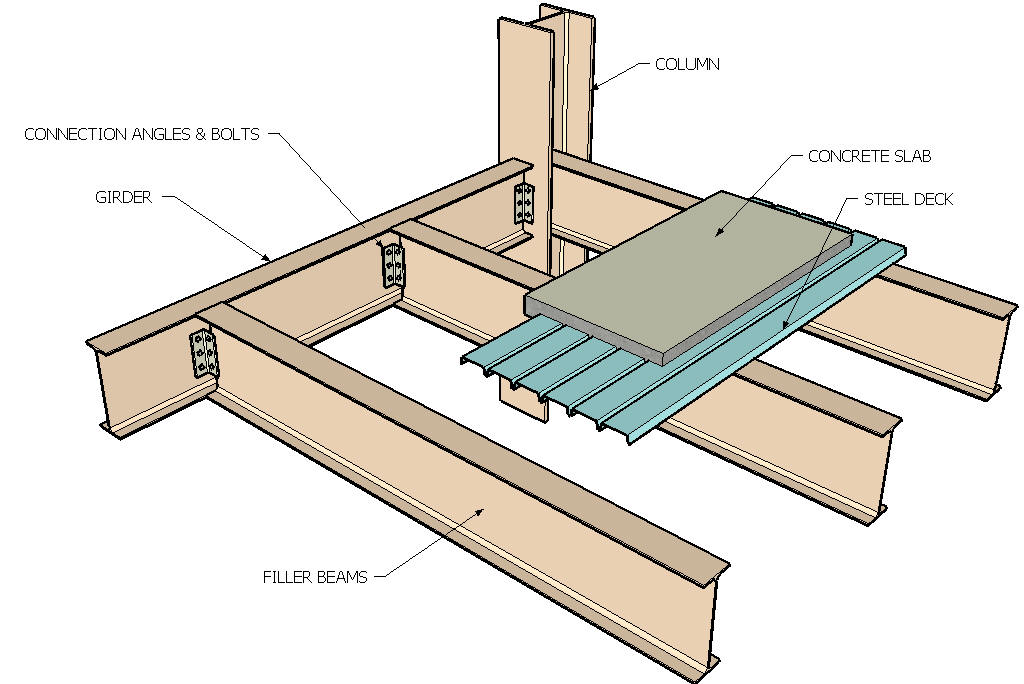Construction Guide For Beginners gets the job done!

CONCRETE FRAME STRUCTURES
Framework constructions that are concrete are a standard - or maybe the most common- type of contemporary building. Such a structure includes a frame or skeleton of concrete as the name suggests. Horizontal people of the framework are called beams, and vertical members are called posts. Person walk-on flat planes of foundations that are known as that are concrete. Of those, the order is the most significant, as it is the primary load-carrying component of the building. The entire building could be brought down by harm to your column, although it's going to affect just one-floor usually if you damage a ray in a building.
Strengthened cement is truly meant to us when we are saying concrete in the construction business. Its name is RCC or reinforced concrete. RCC is concrete rebars, called reinforcement bars, or containing steel bars. This blend works well, as cement is unyielding in compression, simple to create at the site, and cheap, and steel is pretty stable in stress. To make reinforced cement, one first produces a mildew which will comprise the liquid cement and give it the type and shape we desire. Then one talks about spots and the architectural professional's sketches in the metal support bars and ties them in position using wire. Because it's shaped like one, the attached steel is called a reinforcement crate. Once the steel is in place, one can start to ready the concrete, by mixing cement, sand, rock chips in a wide selection of sizes, as well as water in a cement mixer, and pouring in the liquid concrete into the form-work till exactly the appropriate amount is reached. The glue will become tight in a matter of hours, but takes a month to attain its full strength. Hence it is almost always propped-up until that period. During this time the cement must be healed, or supplied on its surface, which it needs for the chemical reactions to proceed correctly with water.
Working-out the precise 'recipe', or proportions of each ingredient, is a scientific discipline alone. It really is called concrete combine design. An excellent mixture developer will start with the properties which are wanted in the mix, then take many factors into consideration, and work out a combination design that is thorough. A website professional will frequently order an alternate sort of combination for an alternative purpose. For example, if he's casting a thin concrete wall a challenging-to-achieve place, he will request a mix that is certainly mo Reflowable than inflexible. This will allow the concrete that is liquid to flow by gravity into every part of the form-work. For most building uses, nevertheless, a blend that was conventional can be utilized. Where the amount identifies the strength of the cement in mm2 or newtons per-square millimeter, frequent illustrations of regular combinations are M20, M30, M40 cement. Thus cement that is M30 will have a comprehensive strength of 30 mm2. The optimum aggregate size may also be specified by a mixture that is regular. Aggregates would be the stone chips employed in cement. If an engineer determines M 30 / 20 cement, he wants M-30 cement with an optimum total dimension of 20mm. He WILL NOT need concrete with a power of between 20-30 n/mm2, which can be a standard misinterpretation in some elements of the planet.
So the construction is really a joined framework of members, each that are securely joined to each additional. In engineering parlance, these connections are called instant connections, meaning that the two people are firmly connected to each other. There are other sorts of relationships, including hinged connections, which are used in steel structures, but concrete framework constructions have moment links in 99.9% of cases. This frame should withstand the various lots that act during its existence on a building, and becomes quite powerful.